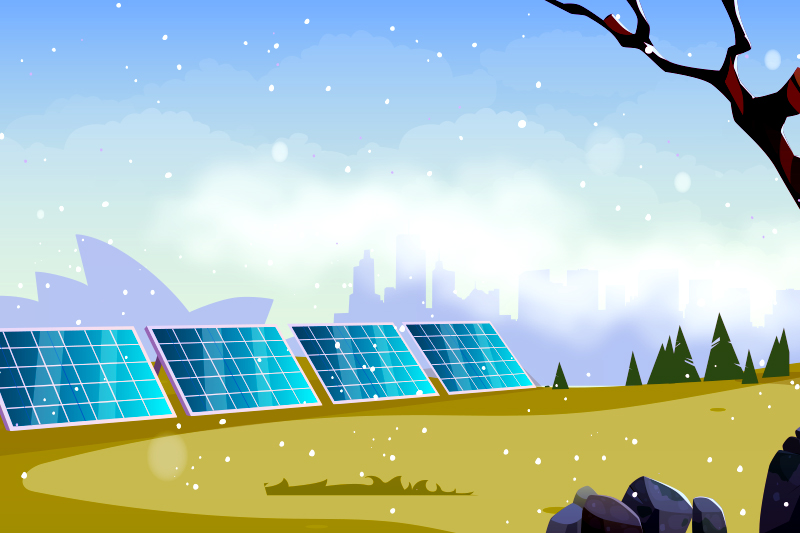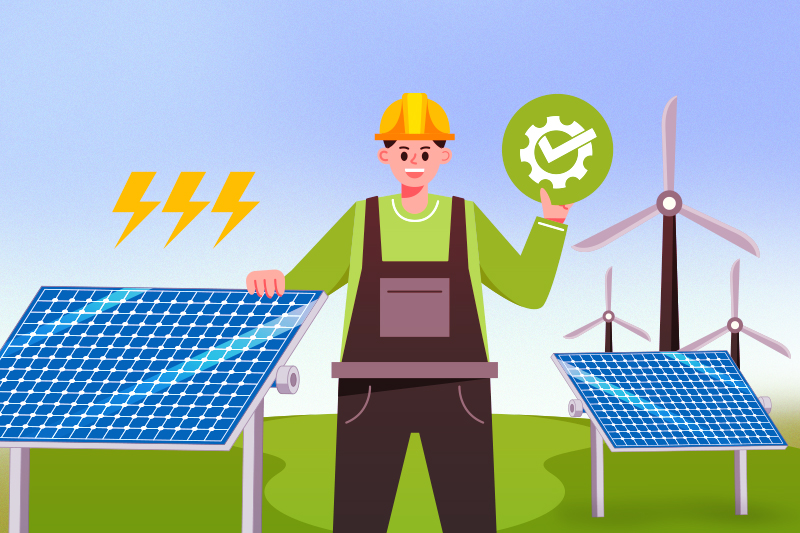As we’re well aware, Australian summers can become quite intense. At times, heat can leave you with barely enough energy to make a quick trip to the pool and back. Solar panels perform optimally under specific temperature conditions like...
As we’re well aware, Australian summers can become quite intense. At times, heat can leave you with barely enough energy to make a quick trip to the pool and back.
Solar panels perform optimally under specific temperature conditions like the human body. When solar panels become excessively hot, the risk of overheating starts.
In such instances, the efficiency of solar panels significantly declines, impacting their ability to capture energy from the sun. But what’s the optimal temperature of solar panels in Australia?
Let’s delve into the ideal weather conditions for solar panels without delay. It will show how temperature affects solar panels and the advantages of harnessing the optimal temperature for these energy systems.
Best Temperature for Solar Panels in Australia
Okay, let’s talk about the best temperature for solar panels in simple words. Most solar panels have a number called a coefficient, which is usually between -0.20 and -0.50 per cent for each degree Celsius.
The closer this number is to zero, the less the solar panel is impacted by getting hotter.
Imagine this number is -0.50 per cent. It means that the solar panel’s efficiency decreases by 0.50 per cent for every degree above the best temperature for solar panels, which is 25 degrees Celsius (77 Fahrenheit).
For instance, if it’s now 32 degrees Celsius, that’s 7 degrees more than the best temperature of 25 degrees Celsius. To figure out how much less power your solar panel will make, you multiply the temperature difference by the temperature coefficient:
7 x -0.50 = -3.5.
So, when your solar panel’s temperature is 32 degrees Celsius, its power decreases by 3.5 per cent.
How Hot Do Solar Panels Get in Australia

You might have wondered, “Do solar panels get hot?” The answer is yes. They can get hot depending on the type, maintenance, and making.
When solar panels overheat, they don’t work as well. Even though many solar panels can handle harsh weather, the ideal temperature for them can vary based on where you are, the material of your roof, how much sunlight they get, and more.
So, it’s tricky to say exactly how hot they can get. Also, black solar panels, while they look nice, can absorb a lot of heat, making them not the best choice in hot weather.
Solar panels, made with dark silicon cells and metal, are good at conducting heat, but this can affect how well they work in warmer places, even if manufacturers try to prevent overheating.
In Australia, solar panels can reach high temperatures during the summer months, often exceeding 65 degrees Celsius (149 degrees Fahrenheit) on scorching days.
The intense sunlight and ambient heat contribute to the elevated temperatures of solar panels. These high temperatures can impact the efficiency of solar panels, as their performance tends to decrease with rising temperatures.
It’s essential to consider strategies such as proper ventilation, tilt, and installation techniques to mitigate overheating and optimise the overall effectiveness of solar energy systems in the Australian climate.
How Does Temperature Impact Solar Panel Efficiency?
The sun has the potential to generate an enormous amount of power, far exceeding what is needed to meet the global electricity demand. Solar panel systems, using photovoltaic (PV) technology, convert sunlight into usable electricity, offering an abundant renewable energy source.
While many might assume that stronger sunlight produces more electricity from solar panels, the reality is different. Excessive heat can lead to declining performance and energy output from solar panels.
As the temperature of a solar panel rises, its energy output decreases, negatively affecting overall power generation. It happens because solar panels rely on photons to excite electrons in the semiconductor.
If a solar panel is already warm, most electrons in the semiconductor are already excited, causing a drop in the overall voltage the panel can generate.
Additionally, the silicon commonly used in solar panels accelerates heat build-up on hot days, compounding the issue. The solar panel’s temperature coefficient provides a helpful measure to quantify the performance loss due to heat.
Optimising Solar Panel Temperature/Understanding the Temperature Coefficient

The temperature coefficient indicates how much your solar panel’s performance decreases for each degree Celsius above the optimal temperature.
The optimal temperature for solar panels is 25 degrees Celsius, and any above temperature impacts their performance negatively.
All solar panels in Australia undergo testing at 25 degrees Celsius, but the temperature impact can vary among manufacturers.
Therefore, each manufacturer must provide the temperature coefficient specific to their solar panel.
Some manufacturers intentionally design their panels to perform better in Australian conditions, operating efficiently at higher temperatures with a lower overall temperature coefficient.
How to Keep Solar Panels Cool in the Heat
Now that you know the best temperature for solar panels is 25 degrees Celsius, what can you do to prevent them from getting too hot?
Luckily, most certified solar panel installers take steps to help solar systems cool naturally. They use tricks to enhance the abilities of solar panels in harsh conditions.
One common trick is leaving about six inches of space between the rooftop and the solar panels. It allows air to circulate and cool down the panels.
However, be careful about the surroundings—consider the shape and size of your building and how much shade and wind it gets.
Leaving a big gap might expose your panels to damage during strong winds or from tree debris. Another option is using a ventilation fan for airflow without the risk of damage.
As mentioned earlier, light-coloured roofing or solar panels can be a good choice in warmer conditions because they reflect more sunlight. Some solar panels now have water cooling systems, but these are more common in big solar power farms than for individual use.
These systems have pipes along the panel’s top that spray water on the glass surface. There’s also ongoing research to make solar panels able to pull water from the air to cool down, similar to how humans sweat.
Solar Panel Efficiency in Colder Condition
People often think that solar power only works well in colder countries. However, solar panels can work great if sunlight and cold temperatures don’t harm their overall performance.
The key is to have certain conditions in place for the best results. What’s most harmful to solar panels is shade, as it blocks them from absorbing sunlight.
Even on a day with perfect conditions for maximum output, shade can cancel out all the solar performance. When installing solar panels, it’s crucial to ensure shade won’t cover the panels’ surface to get the best solar output.
Most efficient Solar Panels of Australia in this Temperature

In Australian weather conditions, some of the most efficient solar panels are manufactured by reputable brands that have optimised their products for the country’s climate.
Here’s a list of the best solar panels that are most efficient with Australian weather:
SunPower REC Jinko TrinaThese panels are known for producing high-efficiency solar panels that perform well in Australia’s varied weather.
These panels often incorporate superior temperature coefficients, durable materials, and innovative designs to maximise energy production. Hence, they are well-suited for Australia’s diverse and sometimes challenging weather conditions.
Solar Emporium Comes With Best Solar Packages
Solar Emporium offers all these top-notch solar panels. Our solar solutions are tailored to your specific needs.
Our Solar packages are designed based on your preferences, whether on finances, the environment, or performance. Solar Emporium is a trusted Australian solar power retailer with high-quality solar panels from reputable manufacturers for over a decade.
Our Solar Experts are here to Help!


